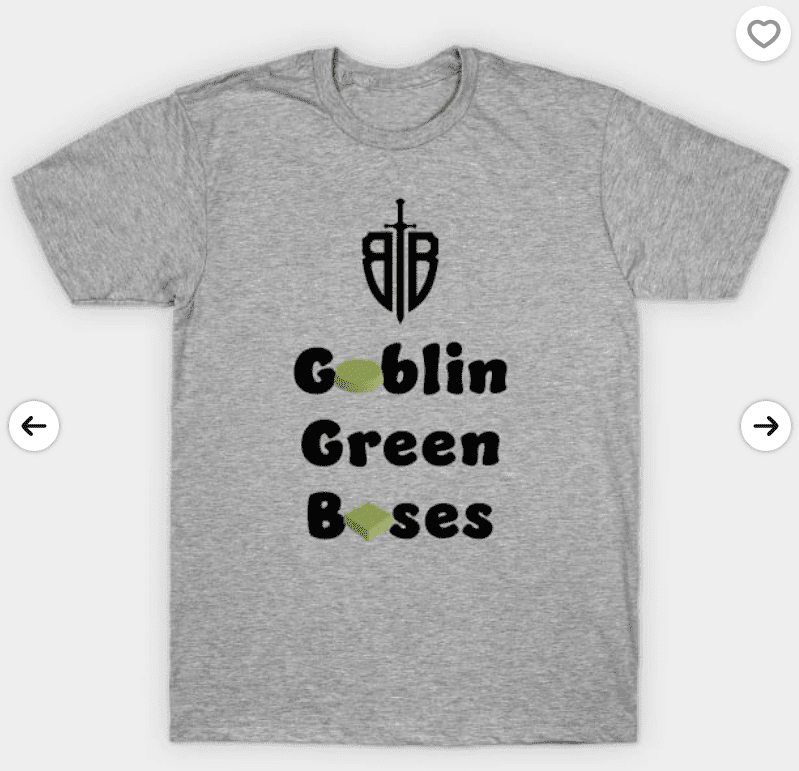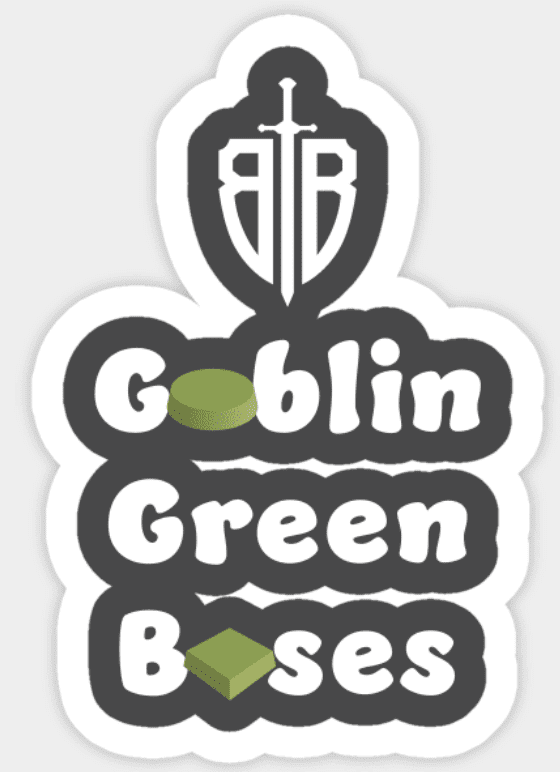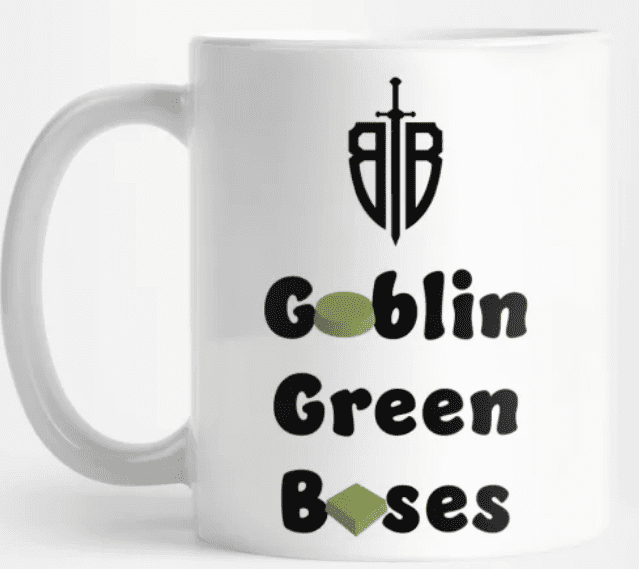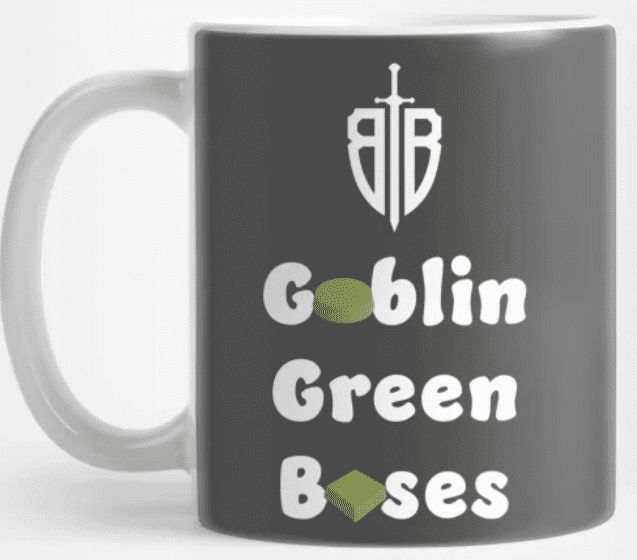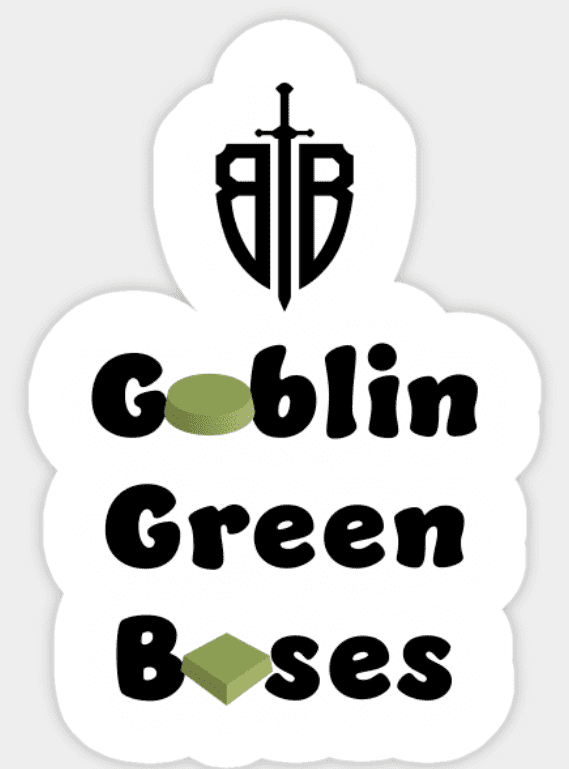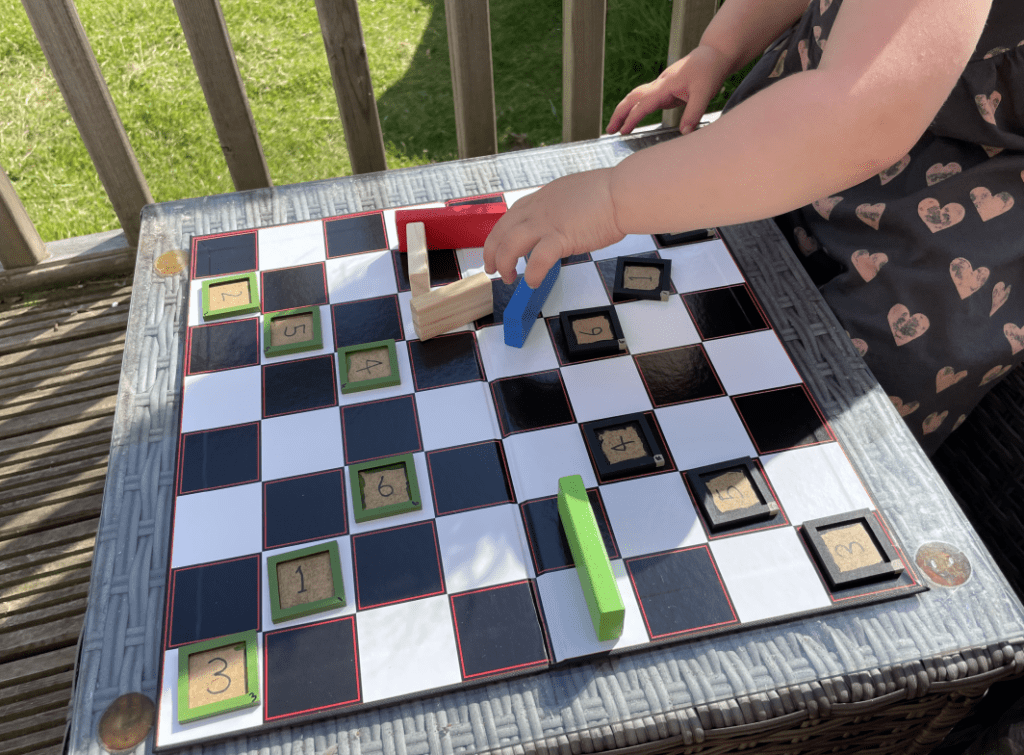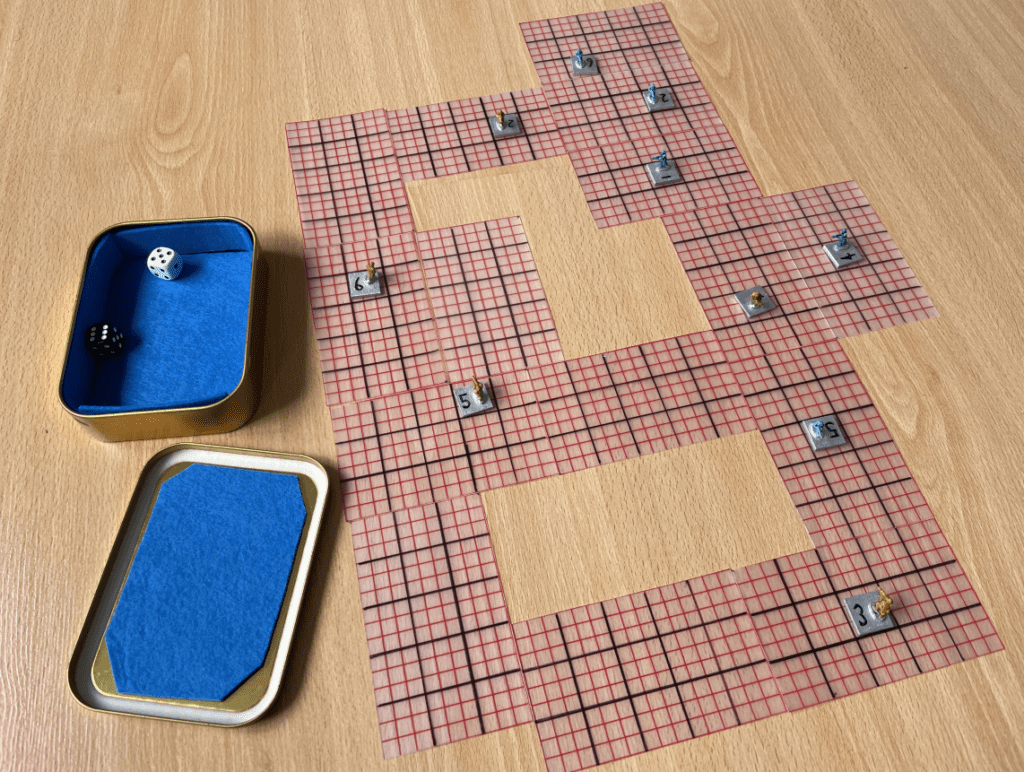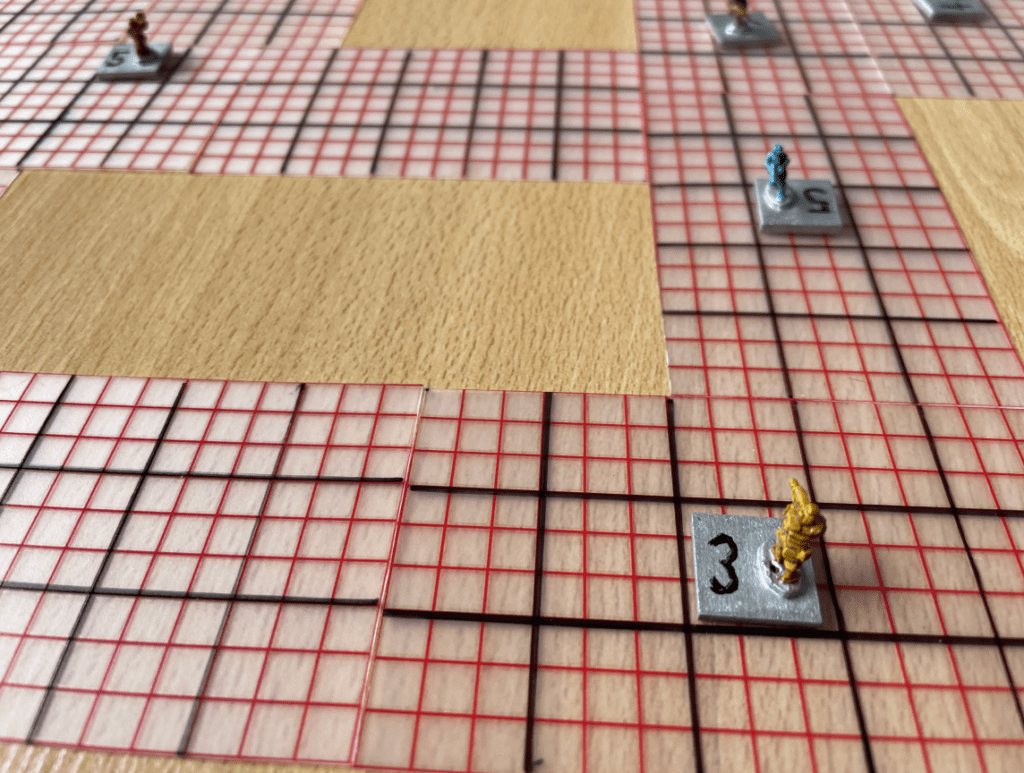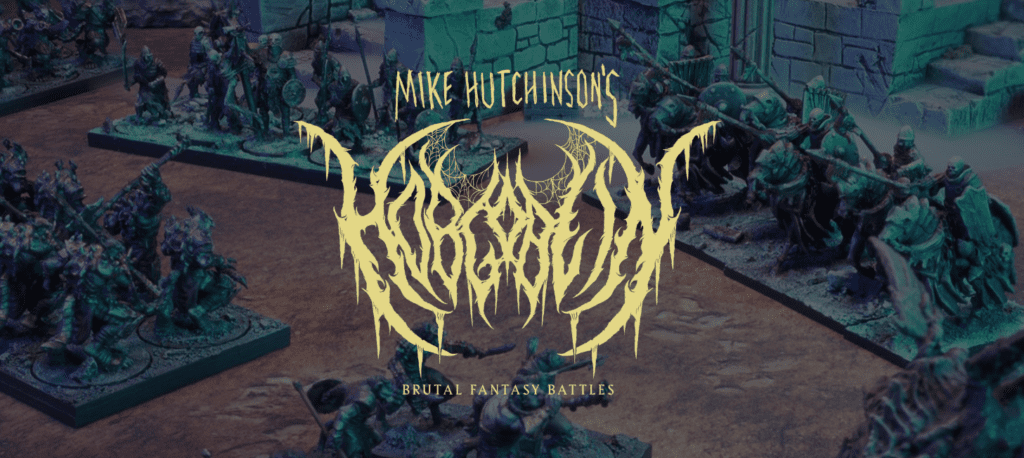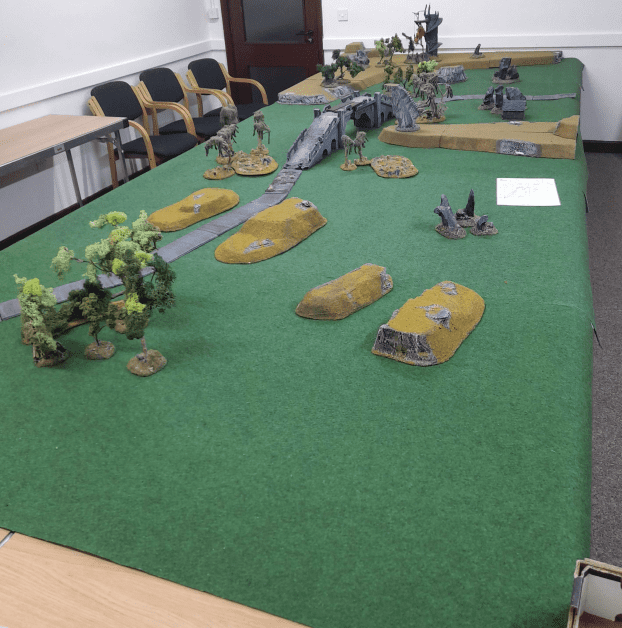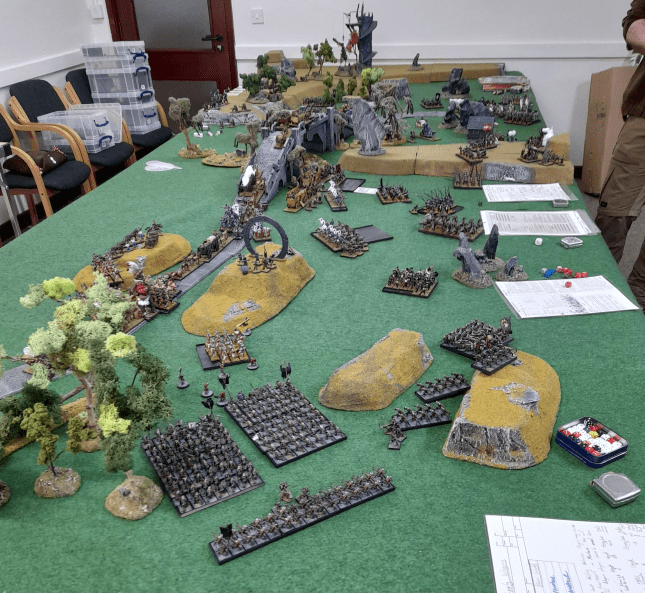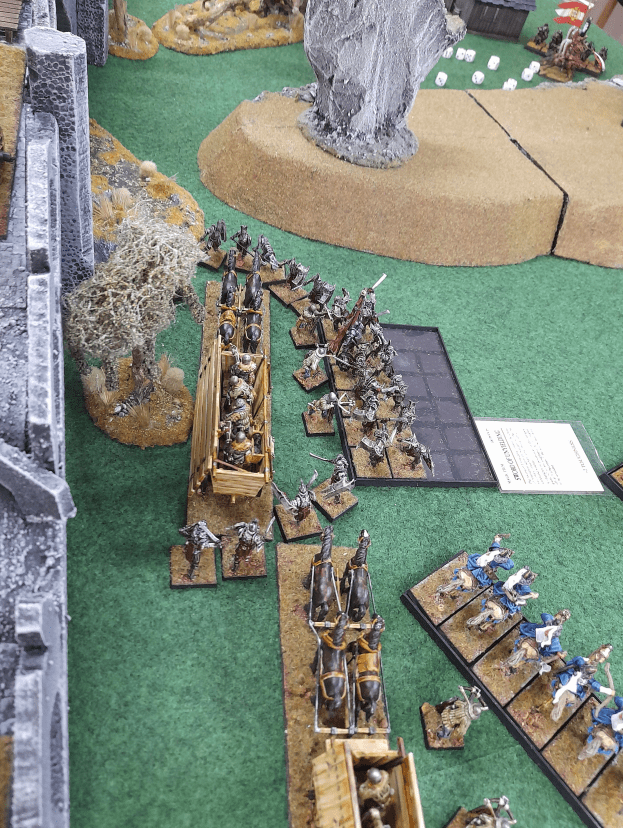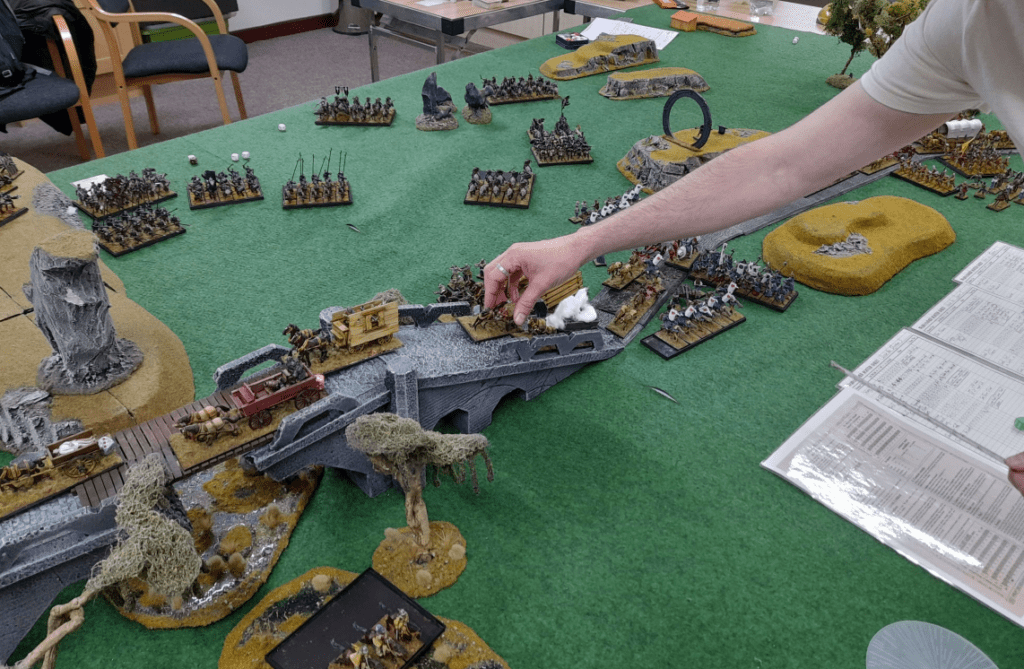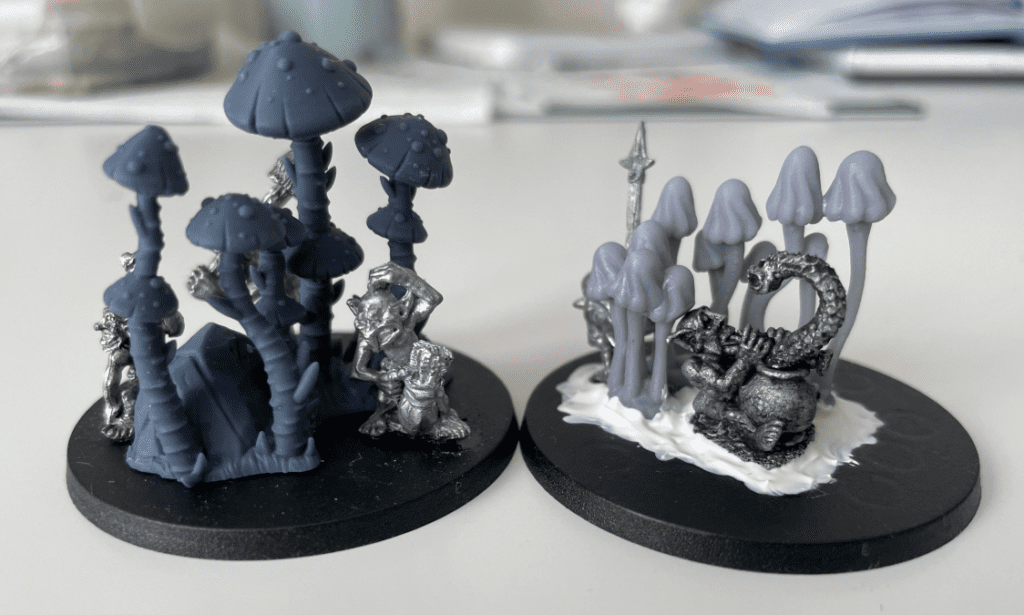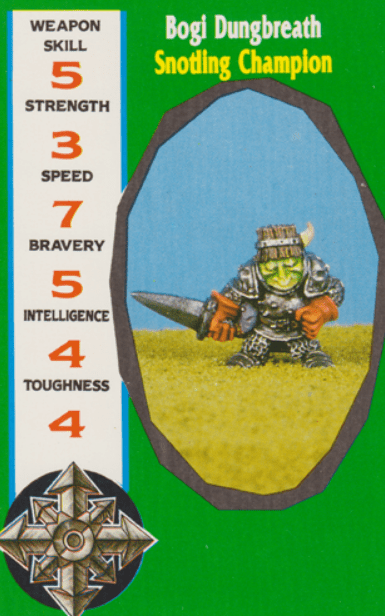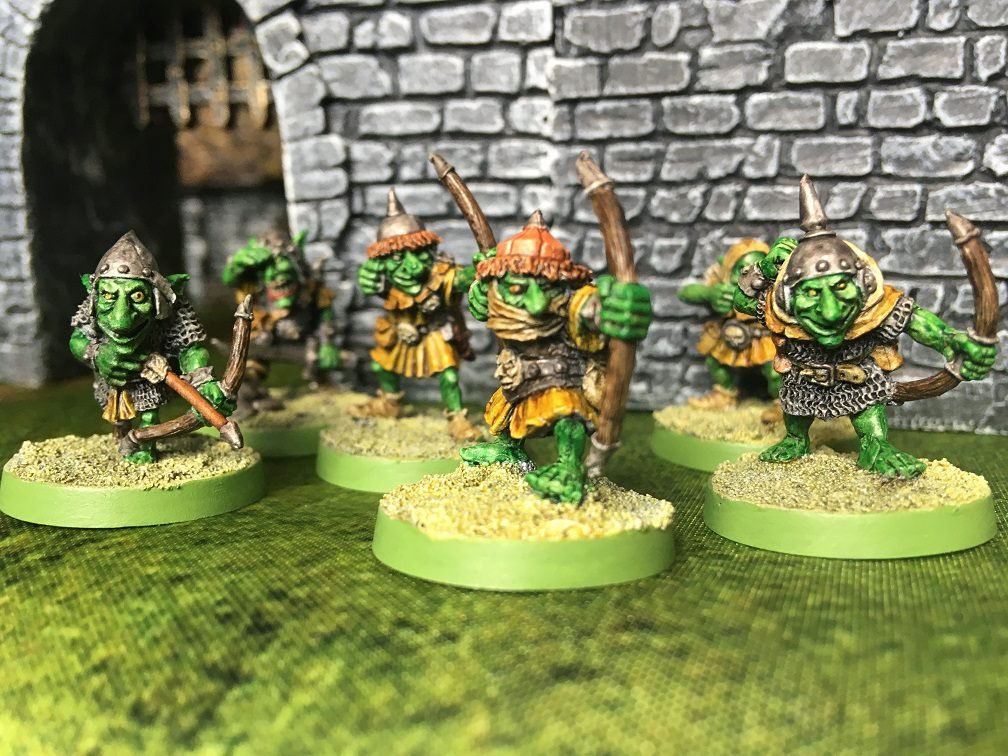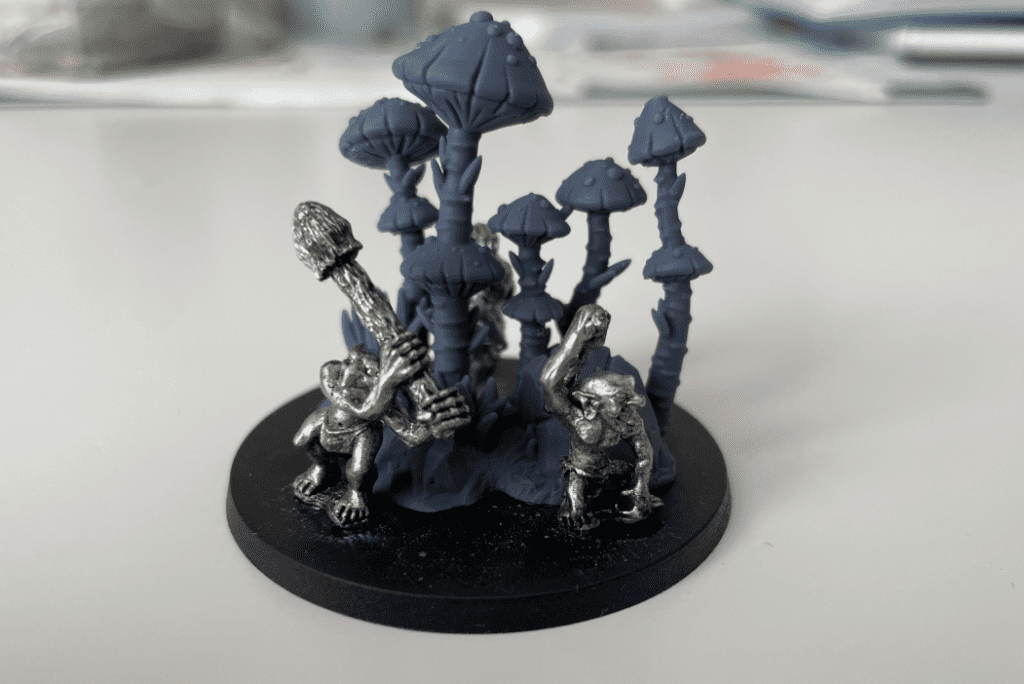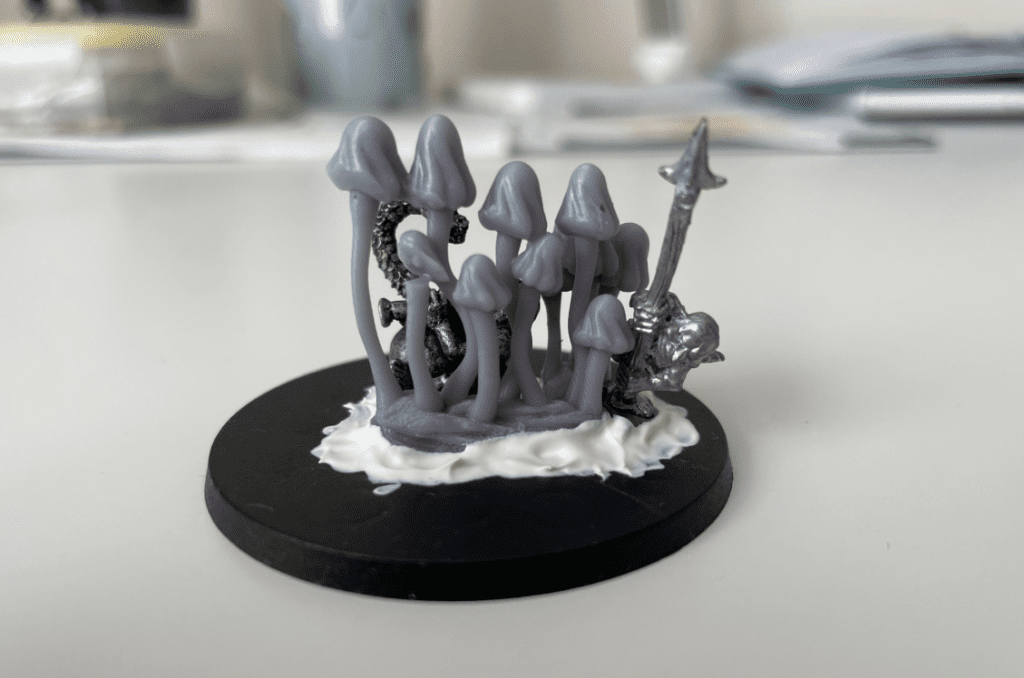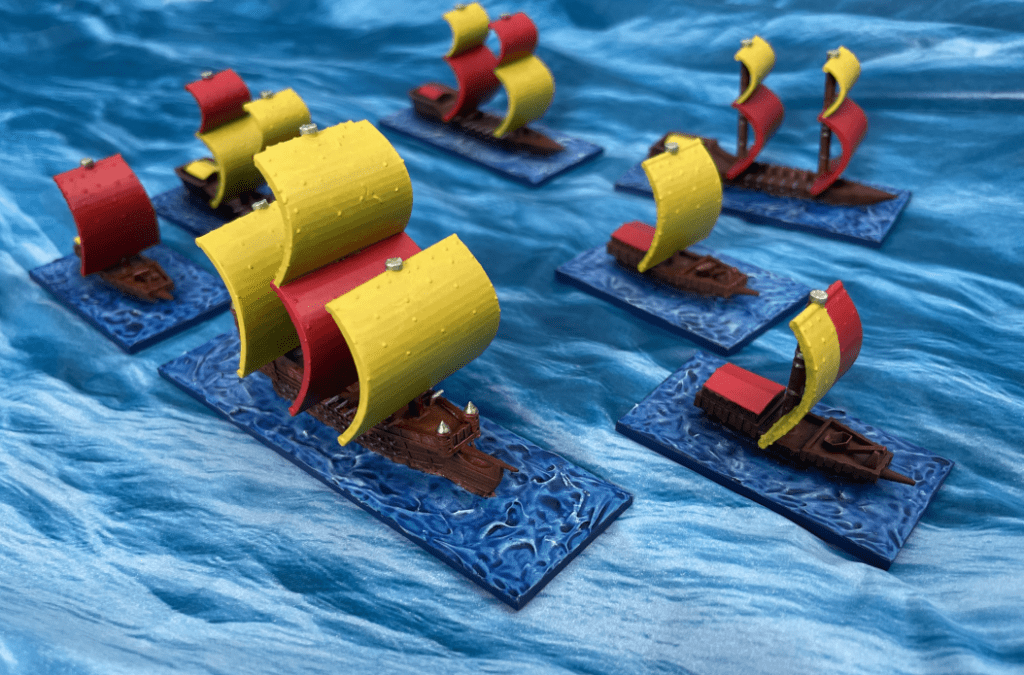I’ve been thinking about ways to incorporate the flavour, narrative, and cooperative fun of a game like Rangers of Shadow Deep into mass fantasy battles. Here, instead of playing against one another, two players can take charge of one army against an opposing force controlled by the game’s “AI”.
Most rulesets usually have their own solo modes built in now, and this isn’t an attempt to write a new game. My thinking here was literally to create a set of event cards that could be drawn between each turn and work with pretty much any system, from Warhammer Fantasy Battles and Kings of War to Hobgoblin, Oathmark, and Mayhem.

If you’re playing a game that doesn’t have any solo rules, then John Lambshead has come up with a cool system in his Sci-Fi Skirmish Scenarios book that I think could be adapted well to the movement of regiments. This involves rolling for each unit before it moves.
- they panic and move backwards
- they stop and move into any nearby cover
- they move straight down the table
- they move down the table at 45 degrees right
- they move down the table at 45 degrees left
- they charge anyone within charge range
More explanation is given by John in his book (which I’d highly recommend), but this offers a really good starting point if we want to avoid a wall of troops moving towards our own in an entirely predictable and methodical fashion.
This, combined with the following event deck, could bring in a whole new level of chaos, unpredictability, and challenge to a solo or co-op mass battle. In order for it to work, you’d just need to assign a number to each unit, then have a dice on hand to roll and see which unit is going to be affected.
Solo/Co-op Rank & Flank Battle Game Event Deck
At the beginning of each turn, draw one card.
1. Missing Orders
Confusion reigns as orders fail to reach a unit on the battlefield.
“Where are our orders? We’re stranded out here!”
Effect: Roll to determine which friendly unit is affected. This unit must miss its next turn and cannot move, attack, or perform any actions. If applicable to your game-specific system (GSS), it may still defend itself if it is being attacked.
2. Frenzied Unit
One of your units becomes frenzied and uncontrollable, fighting with reckless abandon.
“Madness has taken them! They charge with no regard for strategy!”
Effect: Roll to determine which friendly unit is affected. This unit remains under your control but follows the AI system’s actions for the opposing army for the next two turns.
3. Blocked Horn
The commander’s musician’s horn is blocked with mud, requiring immediate assistance.
“Blast it! The horn is useless. Get someone here to clean it!”
Effect: The nearest unengaged friendly unit to the command group must move towards the command unit and spend one turn in base contact, unable to perform any other actions until the next turn.
Yes, this is a bit of a farcical one, but it riffs off the “incompetent leaders” theme that often forms the basis of Joe Abercrombie’s stories.
4. Ranged Ambush
An unseen force launches a ranged attack from off the table.
“Arrows from nowhere! Take cover!”
Effect: Roll to determine which friendly unit is affected. This unit suffers a ranged attack with damage determined by your Game Specific System (GSS).
5. Panic
Panic spreads through a unit, causing them to flee from the nearest enemy.
“Panic has seized them! They’re running for their lives!”
Effect: Roll to determine which friendly unit is affected. This unit spends the next two turns moving directly away from the nearest enemy unit and cannot attack.
6. Supply Line Shortage
A disruption in the supply line means no ammunition for ranged units.
“We’re out of arrows! Hold your fire and prepare for melee!”
Effect: All friendly ranged units cannot fire this turn but can still move and engage in melee combat.
7. Animosity
Tensions flare between two friendly units, forcing them to stay apart.
“Keep them separated, or they’ll be at each other’s throats!”
Effect: Roll to determine which two friendly units are affected. These units must remain at least 20 inches apart for the rest of the game.
8. Targeted
The enemy focuses all its efforts on a single unit.
“All enemy eyes are on us! Hold the line!”
Effect: Roll to determine which friendly unit is affected. All enemy forces target this unit exclusively for the next two turns.
9. Terrified Horses
An unseen force terrifies all horses on the battlefield.
“The horses are spooked! They’re bolting in all directions!”
Effect: All friendly cavalry units move in random directions this turn. Roll for each unit to determine their movement.
10. Misinformation
False orders cause confusion, leading to a unified but misguided movement.
“We’ve been misled! Everyone, move out!”
Effect: All friendly units must move in the same randomly selected direction this turn, regardless of their current situation.
11. Halted Movement
The commander calls for an immediate halt to reassess the battle strategy due to new intelligence received.
“Hold your positions! We need to rethink our strategy.”
Effect: No friendly units may move this turn, except those already under another effect. Units can still shoot and engage in combat.
12. Inspired
A heroic deed or rallying cry inspires a unit to greater feats of strength.
“For glory and honour! Forward, brave warriors!”
Effect: Roll to determine which friendly unit is affected. This unit receives a significant boost to its combat effectiveness for the remainder of the game.
13. Enemy Reinforcements
The most recently defeated enemy unit returns to the battlefield.
“There’s more of them on the horizon!”
The most recently defeated enemy unit is restored to the table as reinforcements, deployed at the enemy’s table edge.
14. Drunkenness
A unit is found drinking on duty, impairing their abilities.
“They’re drunk! They’ll be useless in this state!”
Effect: Roll to determine which friendly unit is affected. This unit’s stats are reduced for the remainder of the game.
15. Primary Objective
A critical order is received to eliminate a specific enemy unit at all costs.
“That unit must fall! All efforts on them!”
Effect: Roll to determine which enemy unit is the target. This unit becomes the player’s primary objective until it is defeated.
16. Friendly Reinforcements
The most recently defeated friendly unit returns to the battlefield.
“Reinforcements have arrived! We’re not done yet!”
Effect: The most recently defeated friendly unit is restored to the table as reinforcements, deployed at your table edge.
17. Impending Doom
A report indicates enemy reinforcements approaching from behind.
“Enemy reinforcements from the rear! We need to fall back!”
Effect: All friendly units must now attempt to escape off the (randomly determined) top left or right corner of the table.
18. Out of Ammo
Supplies run out, and no more ranged attacks can be made.
“No more arrows! We’ll have to fight up close!”
Effect: No friendly units can make ranged attacks for the rest of the game. They can still move and engage in melee combat.
19. Out of Water
A lack of water causes fatigue and lowers effectiveness.
“We’re out of water! The troops are exhausted!”
Effect: All friendly units suffer a reduction in their overall abilities/stats for the remainder of the game.
20. Friendly Fire
Confusion leads a ranged unit to accidentally fire upon allies.
“Hold your fire! That’s our own men!”
Effect: Roll to determine which friendly ranged unit is affected. This unit fires at the nearest friendly unit, causing damage as determined by your GSS.
21. Old Comrades
A soldier spots an old comrade among the enemy ranks, leading to an unexpected truce.
“Is that you, old friend? We can’t fight each other!”
Effect: Roll to determine which friendly unit and which enemy unit are affected. Both units refuse to fight one another for the remainder of the game and cannot engage in combat against each other.
22. Corruption and Betrayal
One of your units turns traitor, joining the enemy ranks.
“Treachery! They’ve turned against us!”
Effect: Roll to determine which friendly unit is affected. This unit immediately becomes an enemy unit and will be controlled by the AI system for the opposition for the remainder of the game.
23. Offer of Alliance
A cunning offer persuades an enemy unit to defect and fight for your cause.
“Gold and promises sway even the staunchest of foes!”
Effect: Roll to determine which enemy unit is affected. This unit immediately switches sides and becomes a friendly unit, under your control, for the remainder of the game.
24. Scouting Report
A scout brings vital information about enemy positions.
“We have the intel we need. Let’s use it wisely.”
Effect: You may reposition one friendly unit or gain a strategic advantage as determined by your Game Specific System (GSS).
25. The Soldiers Due
Thanks to Cam in our Discord community for this one!
The army’s pay has been in arrears for months. Any time they defeat an enemy unit, they pause to loot the corpses.
“Now let’s see what he’s got in his pockets, shall we?”
Effect: After defeating an enemy unit roll a 1D6.
1-3: The victorious unit misses its next turn as it stops to thoroughly search the defeated unit for coins and valuables. They may defend themselves if attacked.
4-6: The defeated unit was well-heeled! The attacking unit gets double movement next turn as they rush forward to see if more loot is to be had.
26. Encirclement Fear
Paranoia sets in as rumours of enemy reinforcements arriving from all sides spread through the ranks.
“They’re surrounding us! Stay close and hold together!”
Effect: All friendly units must group together and remain within 30 inches (adjust relevant to your preferred scale) of one another for the remainder of the game. Units outside this radius must move to join the group immediately. This excludes units already under another effect.
27. Stray Puppy
A stray puppy wanders onto the battlefield, causing a temporary ceasefire as everyone tries to ensure its safety.
“Hold your fire! There’s a puppy on the field!”
Effect: All combat ceases for this turn as units ensure the puppy’s safety. No units can engage in melee or ranged attacks, but they can still manoeuvre. Combat resumes once the puppy is safely out of sight.
28. Discordant Melody
The enemy’s musicians play a horrendously out-of-tune cover of “Mustang Sally,” disrupting your forces’ focus.
“What is that noise?! Make it stop!”
Effect: All friendly ranged attacks must now be directed at the enemy command group until they are eliminated. Units without ranged attacks are not affected by this event.
